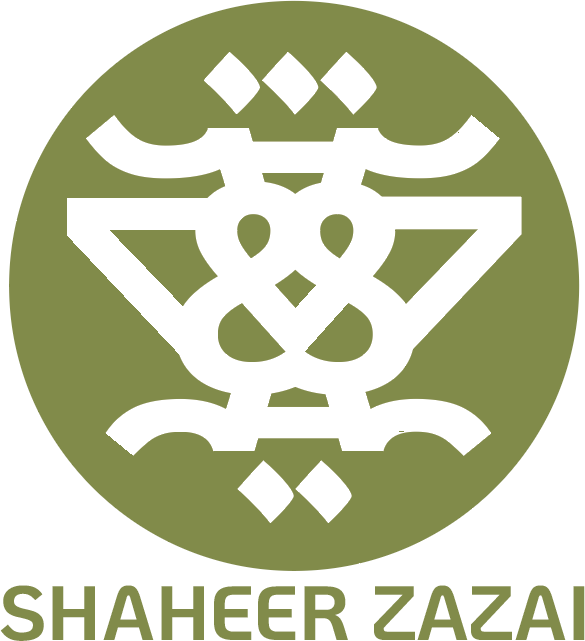'A Call Home' at Patel Brown Gallery, 2022
Foreword by Muheb Esmat - Independent Curator and Artist
The exhibition ran from Feb 12 - Mar 19, 2022
You can view a virtual tour of the exhibition here.
Images of works included in this exhibition can be seen here, here, here and here.
A Call Home, a solo exhibition by Shaheer Zazai exploring the artist’s journey in understanding memory and cultural identity as a dual space of pride and change. Zazai’s works in this exhibition are rooted in a conscious examination of his own cultural identity as an Afghan living in diaspora. Where inherently personal moments give birth to abstract compositions capable of telling multiplicity of histories.
With a practice that expands across painting and digital media, the works presented in this exhibition include a set of carpets assiduously rendered by Zazai in Microsoft Word and woven in collaboration with carpet weavers in Kabul. Joining them are a group of solemn black and white prints that are simultaneously mesmerizing and eerisome. One of the prints presents a metaphorical deconstruction of the layered histories of Bagh-e Babur- a public garden in Kabul whose origin dates back to the 16th century and serves as both a living monument of the city’s past and a formidable cornerstone for many memories shared and identities formed in the diaspora.
Born in Afghanistan and raised in Pakistan before eventually settling in Canada, Zazai’s practice is informed by the immediate social and cultural environments that the artist has called home. Hence, this exhibition presents a timely personal rumination on a place, culturally and geographically, that has recently witnessed enormous changes marked by the end of the American occupation, the fall of the republic, and the return of the Taliban.
Zazai’s digitally crafted works present a personal journey across time and space made legible through beautiful compositions that exude a profound commitment to reframing not only the artist’s own identity but also the viewer's relation to it. Driven by his search for answers in the face of a question that encapsulates our contemporary existence: “How can we learn to understand ourselves when the world around us is changing at a pace that we can’t keep up with?” The works presented in this exhibition are simultaneously an ode to his Afghan roots and an examination of histories of cultural production that shape us. Utilizing Microsoft Word, Zazai creates visible ties between the histories of traditional design languages and contemporary mediums. When it comes to Afghan visual culture, this is an act that becomes ever more important when considered in the face of pervasive cultural histories drawn across strictly binary and conflicting definitions of tradition and contemporaneity.
A Call Home presents Zazai’s personal journey in understanding a cultural history bestowed upon the artist by his family and immediate community, which he then visualizes into beautifully abstract and colorfully reverent compositions. Creating digital works that resemble traditional carpets from Afghanistan becomes an act of exercising a claim to a visual language that lives peacefully between the past and the present moment. The artist’s evident concern and attempt at visualizing the emotional weight of the recent turmoil that unfolded in Afghanistan are further visible through his series of black and white prints. which he sees as a direct product of a somber realization that color held an unfamiliar taste as he witnessed the turn of another page in Afghanistan’s recent tumultuous history with the return of the Taliban. Zazai’s works presented in this exhibition serve as a formal and philosophical rumination on culture, memory, and identity. The works in this exhibition interrogate the categorizations that define and restrict one’s cultural subjectivity, specifically for the many Afghans in the diaspora that come to exist within multiple cultural identities. Zazai presents the viewer with the space to critically reflect upon how cultural identities are formed and framed through these visually distinct but conceptually tied bodies of works.
